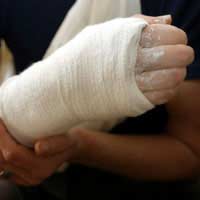Fault in Personal Injury Claims

In personal injury claims there are two elements to the requirement of ‘proof.’ The first is the burden of proof, which defines who is required to prove the case.
The second is the standard of proof, which provides the level of proof required to prove the case. In personal injury cases, the claimant must prove their case ‘on a balance of probabilities.’ This means that the party who brings the claim has to persuade the court that what they allege was more likely than not to have happened.In terms of personal injury, there are other issues in relation to fault. Some types of personal injury claims are ‘indefensible’ (strict liability), other cases are only partially the fault of the defendant because the injured person also bears part of the blame (contributory negligence), and sometimes the defendant may have been acting in the course of his or her employment, in which case the employer is liable for injury (vicarious liability.)
Strict Liability
The doctrine of strict liability automatically finds a party responsible without them having to be at fault for anything in particular. There does not need to be any negligence involved as all that needs to be proved is that the injury occurred, and that the defendant is liable for that injury. However, the defendant will only be responsible to a certain extent – the injury must have been reasonably foreseeable.Contributory Negligence
Contributory negligence is a factor in personal injury cases when the negligence of the person who suffered the injury contributed to the accident. This means that the court will be entitled to consider the percentage of ‘fault’ caused by the injured party and deduct that amount from any award of compensation accordingly.Vicarious Liability
If an employee is negligent either in an act or by an omission while they are working ‘in the course of their employment’ the employee will be ‘vicariously liable.’ This is the case even if the employee’s conduct was not sanctioned by the employer. An employer will not be vicariously liable if either a) the employee was not negligent or b) if the employee was negligent, that the negligence was not in the course of the employment but rather that the employee was acting as an individual, not an employee. For example, if a person working as a school teacher leaves the premises at lunch time and runs over a member of the public, they are not likely to be acting in the course of their employment. However, if a milkman is delivering his round in the dim morning light and negligently leaves a crate of milk in the middle of the pavement, which a jogger trips over, this would be likely to be in the course of his employment.Business Energy With a Difference
If you are looking for business energy or need advanced solutions like remote energy monitoring, new supplies, downgrading or upgrading capacity, have a no obligation chat with Purely Energy.
To find our more get in touch here. or call 0161 521 3400.







